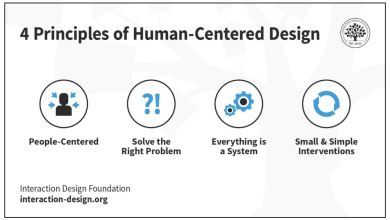
Nvidia’s earnings conundrum and Altman’s bubble warning are reminders: AI’s ultimate winners won’t be the flashiest. They’ll be the most efficient.
The cracks in the AI boom are beginning to show. Nvidia’s stock slipped despite blockbuster earnings as analysts warned of overreliance on just two customers. OpenAI CEO Sam Altman has bluntly called the market a bubble, even as he pursues a half-trillion-dollar valuation. The froth is a reminder that hype cycles don’t last forever, and the real question is who can translate this extraordinary technology into lasting business value.
After years of viral demos and grand promises, investors and executives are coming to terms with a simple truth: the winners in the AI economy won’t be crowned by whoever shows the flashiest chatbot or the most attention-grabbing keynote demo. They’ll be determined by who quietly uses AI to generate real value—greater efficiency, stronger margins, and durable advantages that compound over time.
For much of the past three years, AI has been marketed like a consumer gadget: spectacular demos of models generating realistic images and video, or performing tasks once reserved for human employees. These displays are tailor-made for today’s attention economy. Yet buzz does not necessarily translate into lasting business impact. A chatbot that generates memes is fun. But AI-enabled automation that cuts fraud, streamlines logistics, or reduces customer support costs by 30 percent is transformative.
That’s why the most important AI race is happening behind the scenes, in the “engine room” of organizations. That’s where AI will separate winners from laggards.
At Graphika, we ingest and process internet-scale data to map online communities and detect the online activity that shapes them. Our platform handles billions of interactions across millions of network connections. That volume is extremely difficult to analyze effectively without machine support, and AI is nothing short of a scalability miracle in that regard. It helps us filter noise, flag anomalies, and surface signals earlier—whether that’s a rapidly emerging trend or a coordinated network trying to manipulate public discourse about a geopolitical conflict. For complex analytic tasks, human judgment remains essential. AI isn’t a replacement. Hallucinations remain common enough that models can’t be trusted to make decisions on their own. But in the hands of experts—like our intelligence team—who validate and fine-tune outputs, AI becomes an Iron Man suit: amplifying human skill to deliver sharper, faster analysis at scale.
These gains may not be readily visible to customers, but they’re a decisive edge for companies that embed them into high-value workflows without sacrificing quality. The changes are not moonshots, but efficiency gains that steadily compound over time.
History shows this is how nearly every wave of general-purpose technology plays out. The early excitement centers on headline-grabbing demonstrations and hype. The long-term winners are the companies that quietly retool their operations to turn breakthroughs into durable efficiency and scale. AI will follow the same arc.
The dot-com boom offers a clear precedent. In the late 1990s, high-profile online retailers like Pets.com captured headlines with Super Bowl ads and slick websites, but many collapsed when the bubble burst. Amazon, by contrast, invested relentlessly in its “engine room”: warehousing, fulfillment, and supply chain automation. It retooled operations around data-driven inventory management, built massive distribution centers, and optimized logistics so that orders could be fulfilled faster and cheaper than competitors. What originally looked like an online bookstore on the surface was, in reality, a world-class efficiency machine. Those quiet operational advantages compounded year after year, turning Amazon into the e-commerce giant that survived the bubble while rivals that chased headlines disappeared.
Salesforce offers a similar lesson. In the early 2000s, Marc Benioff grabbed attention with his cheeky “No Software” logo and carnival-style conferences that mocked legacy vendors. To many, Salesforce looked like another gimmicky upstart in the otherwise dull world of customer relationship management. But beneath the theatrics, it was quietly retooling enterprise software. Salesforce didn’t just move CRM into the browser; it built a cloud-native platform where developers could create applications directly on top of customer data. The key insight—that customer data was the most valuable foundation to build on—enabled Salesforce to become the “iOS of business,” spawning an entire SaaS ecosystem and reshaping how companies operated. The showmanship may have opened doors, but the lasting advantage came from rebuilding the enterprise software stack in the cloud, a lesson AI will surely repeat.
It remains unclear which of today’s headline-grabbing AI companies will turn out to be Pets.com, and which will follow the path of Amazon or Salesforce. But the center of gravity is already shifting, and boards and executives are asking tougher questions: How does AI improve our cost structure? Where can it reduce waste, speed decisions, or free up talent for higher-value work?
In the end, the AI race won’t be won on the demo stage. It will be won in the engine room by companies quietly harnessing its power to build durable advantages.





